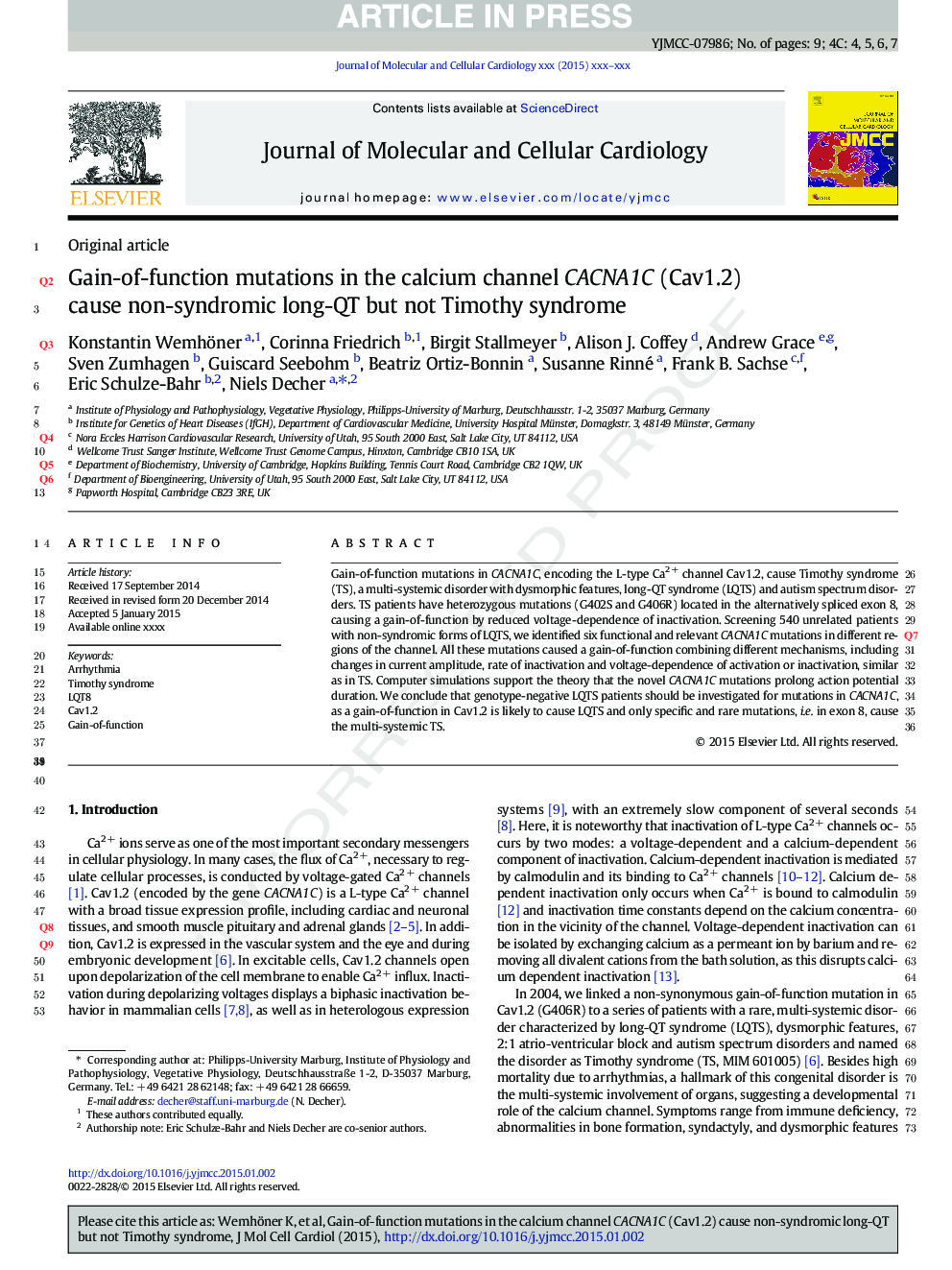| Article ID | Journal | Published Year | Pages | File Type |
|---|---|---|---|---|
| 8474409 | Journal of Molecular and Cellular Cardiology | 2015 | 9 Pages |
Abstract
Gain-of-function mutations in CACNA1C, encoding the L-type Ca2Â + channel Cav1.2, cause Timothy syndrome (TS), a multi-systemic disorder with dysmorphic features, long-QT syndrome (LQTS) and autism spectrum disorders. TS patients have heterozygous mutations (G402S and G406R) located in the alternatively spliced exon 8, causing a gain-of-function by reduced voltage-dependence of inactivation. Screening 540 unrelated patients with non-syndromic forms of LQTS, we identified six functional relevant CACNA1C mutations in different regions of the channel. All these mutations caused a gain-of-function combining different mechanisms, including changes in current amplitude, rate of inactivation and voltage-dependence of activation or inactivation, similar as in TS. Computer simulations support the theory that the novel CACNA1C mutations prolong action potential duration. We conclude that genotype-negative LQTS patients should be investigated for mutations in CACNA1C, as a gain-of-function in Cav1.2 is likely to cause LQTS and only specific and rare mutations, i.e. in exon 8, cause the multi-systemic TS.
Related Topics
Life Sciences
Biochemistry, Genetics and Molecular Biology
Cell Biology
Authors
Konstantin Wemhöner, Corinna Friedrich, Birgit Stallmeyer, Alison J. Coffey, Andrew Grace, Sven Zumhagen, Guiscard Seebohm, Beatriz Ortiz-Bonnin, Susanne Rinné, Frank B. Sachse, Eric Schulze-Bahr, Niels Decher,
